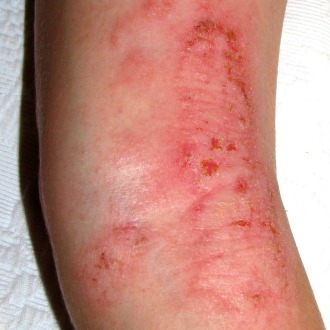Patient assessment
Do not use alcohol hand cleaner between every patient examination
It will cause an irritant dermatitis. Wash your hands with a soap substitute and water before and after examining patients. If you are concerned about contagion after examining a particularly unhealthy patient, perhaps use Dermol lotion as a soap substitute.
Treatment
Do not stop Dianette after two years in patients with active acne
Dianette is licensed for the treatment of acne for ‘as long as the acne is active’ – I have had patients on this for 20 years. There is no need to stop Dianette after two years if the acne is still active, as it will get worse. When prescribed generically it is no longer expensive (£4.03 for 63 tabs). Any woman who has been on any combined contraceptive pill for more than six months, and has not had a DVT, is at a very low risk of developing a DVT.1 Yasmin is an alternative to Dianette, but is more expensive and possibly carries a higher thrombogenic risk.
Do not prescribe 2.5% hydrocortisone cream for eczema or dermatitis
It has the same potency as clobetasone, and 2.5% hydrocortisone cream costs £20.59 for 15g, compared to clobetasone, which costs £1.86 for 30g. It will also cause confusion, as everyone assumes hydrocortisone is a very mild potency topical steroid.
Do not prescribe topical steroids as creams
Topical steroids with creams have high water content and therefore need preservatives, which can cause irritation or even allergic reactions. I always prescribe them as ointments wherever possible, as these contain no preservatives, which also has a useful additional occlusive effect. Patients are usually prepared to tolerate the greasy feel of an ointment at bedtime.
Do not use occlusive medicated dressings and dry bandages to treat infected atopic eczema in children2
Occlusion of an infected area of skin markedly raises the humidity on the skin surface, which enhances further bacterial overgrowth. Dry dressings can easily become stuck onto the eczema, becoming very hard and painful to remove.
Do not use steroids near the face if you suspect perioral dermatitis or rosacea2
These conditions are aggravated, and sometimes caused by, inhaled steroids, or even the minimal residue left on a finger after treating another area of skin or child’s eczema.
Do not routinely prescribe sedating antihistamines for children with atopic eczema
If atopic eczema is disturbing the patient’s sleep, then a sedating antihistamine can be very helpful. There is no place for non-sedating antihistamines in eczema. However, this is not an ideal long-term solution, as sedating antihistamines can adversely affect performance at school and so these should not just be prescribed routinely.
Do not treat varicose eczema with topical antibiotics
They will not help. Longstanding ulcer and varicose eczema are usually colonised by micro-organisms in a ‘biofilm’, which are adherent to the underlying tissues. This biofilm prevents antibiotics from working and using an antibiotic (especially topically) will simply result in more resistant organisms. It is rarely, if ever, helpful to take a swab on varicose eczema and this will invariably confirm bacteria. A swab may be helpful if the patient has evidence of invasive infection such as cellulitis, and may then direct the choice of oral or systemic antibiotic, when there are features of systemic upset.
Signs of infection include increasing pain, fever, signs of cellulitis and an enlarging ulcer. Note that cellulitis almost always affects only one limb, so a bilateral reaction is much more likely to be an allergic contact dermatitis or other eczematous flare.
Do not use topical tacrolimus ointment and pimecrolimus cream for the treatment of mild atopic eczema3
These products are not first-line treatments for atopic eczema of any severity, but, if complete emollient therapy (the use of an emollient as a soap substitute, a bath oil and a leave-on emollient) is not sufficient, topical tacrolimus can be used long term, just twice a week, to keep eczema at bay after a flare has been controlled.4 Being an ointment, any leave-on emollient should not be applied to the same area of skin as topical tacrolimus within 30 minutes either side.
Do not prescribe clobetasone with antimicrobials if you are unsure of the diagnosis of a rash and whether it is fungal
Clobetasone with antimicrobials do not contain antifungals. It contains nystatin (which is only anti-yeast). The constituents of clobetasone cream with antimicrobials could hardly be designed better to aggravate and confuse the presentation of a fungal infection.
Do not use vitamin D products to treat facial psoriasis
All topical vitamin D products are irritant and will typically massively aggravate eczema. Generally, patients cannot tolerate them on flexural areas or the face. If you want to treat facial psoriasis, you might perhaps cautiously try calcitriol just once or twice a week initially to ensure it is tolerated, or, better still, seek advice.
Do not prescribe aqueous cream
It is an irritant to normal skin and is sometimes even used to demonstrate how a patient’s skin looks when inflamed, for comparison with a patch test. I don’t believe it should even be used as a soap substitute.5,6
Referral
Do not review your acne patients too early
Most treatments for acne vulgaris do not make much difference for a few months, so there is little advantage in reviewing your patient too early, apart from perhaps confirming adherence to treatment. If you are prescribing optimal standard treatment and this is not controlling the patient’s acne after about six months, you should seriously consider referral.
Do not refer basal cell carcinoma via the cancer two-week wait
If it is very near to the eye, discuss with dermatology or ask for ‘soon appointment’.
Dr George Moncrieff is a dermatology GPSI in Bicester, Oxfordshire, and is a committee member for the Primary Care Dermatology Society.
References
Pulse October survey
Take our July 2025 survey to potentially win £1.000 worth of tokens














